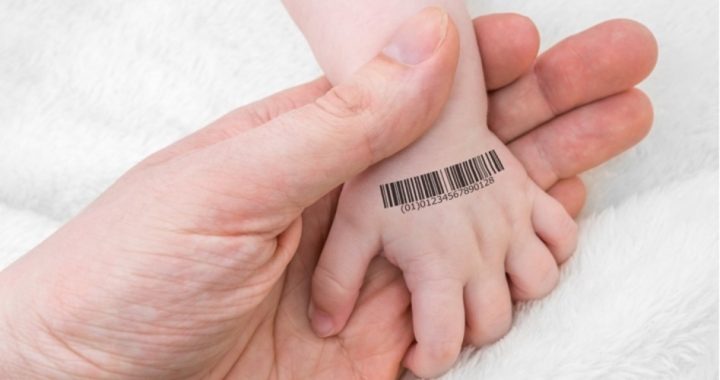
Draw me up a son who’ll be 6’4”, built like Michelangelo’s David, drop-dead handsome, athletic as all get-out, with multiple talents and a 185 I.Q. — and here’s my check. While we’re not yet at this point, what some are calling “designer babies” are already a reality, though that quoted term here is a euphemism. They’re actually selected babies who’ve made the most unforgiving cut.
They’re the offspring of parents already using genetic testing to choose a child, with an eye toward eliminating gene-linked diseases. For example, MIT Technology Review’s Laura Hercher recently cited the case of “Matthew,” who learned at age 30 that he had “a genetic form of dystonia, a condition where muscles contract uncontrollably,” as she relates it.
Hercher, a genetic counselor, shared his and his wife’s story (but changed their names to protect privacy):
Matthew was lucky. His was a mild version of DYT1 dystonia, and injections of Botox in his knee helped. But the genetic mutation can cause severe symptoms: contractures in joints or deformities in the spine. Many patients are put on psychoactive medications, and some require surgery for deep brain stimulation.
Their kids, Matthew and [his wife] Olivia were told, might not be as lucky. They would have a 50–50 chance of inheriting the gene variant that causes dystonia and, if they did, a 30% chance of developing the disease. The risk of a severely affected child was fairly small, but not insignificant.
My friends learned there was an alternative. They could undergo in vitro fertilization and have their embryos genetically tested while still in a laboratory dish. Using a technology called pre-implantation genetic testing, they could pick the embryos that had not inherited the DYT1 mutation.
And that’s the issue. Matthew and Olivia don’t like the term “designer baby,” reports Hercher, because it “has negative associations, suggesting something trivial, discretionary, or unethical.” Yet the bigger problem is that it’s a euphemism here. The science described above is a form of eugenics, the practice of improving a human population’s genes via selective breeding and/or the elimination of individuals carrying the “wrong” ones.
This practice dates back to ancient Greece, where a council of elders in Sparta would order the deaths of infants deemed defective; similarly, Roman law dictated that a father must kill a deformed child. More recently, eugenics, per se, fell into disrepute due the Nazis unabashed embrace of a racialized version of it. But now it’s returning with a vengeance, under a different guise and with more sophisticated technology.
Exercising common sense, “Americans approve of using reproductive genetic tests to prevent fatal childhood disease, but do not approve of using the same tests to identify or select for traits like intelligence or strength,” relates Hercher, presenting a Johns Hopkins Genetics and Public Policy Center’s summation of survey findings. The problem is that today’s scientists aren’t eliminating childhood disease — they’re eliminating diseased children.
Note again that the process in question involves creating a number of embryos — nascent human beings — and then killing all but one to a few: the chosen. Many will now scoff, as an embryo is poorly developed. But how relevant is this? As I pointed out in 2013:
It doesn’t really matter what month one says human life “may” begin because we’re always presented with the same correlative questions. What week of that month? What day of that week? What hour and minute of that day? And, then, what second of that minute?
This lends perspective. For what we then must accept is that one second the intrauterine entity isn’t a person, but the next second it — although I suppose at that moment we can say “he” — somehow magically becomes one. And this isn’t even the moment of conception, a seminal event without which there would be no development in the womb whatsoever. So how … does this humanizing transformation take place?
Preventing disease is certainly a noble goal, and if gene editing is employed — and no termination of human life occurs — genetic engineering thus directed is surely a moral endeavor. The current eugenics, however, raises a question: If it’s better to be dead than to live compromised by disease or being a burden to others, why stop with the unborn?
The Spartans, Romans, and Nazis sure didn’t. And if killing an embryonic human at a given point is okay, is it not also licit one second later? Then what about the next second, and the next, next, next, and next? Follow it out, and eventually you’re gassing the disabled because they are “life unworthy of life,” as those sharply dressed, WWII-era goose-steppers put it.
It’s the same as with the beginning-of-human-life question: If conception is not the answer, at what point is the intrauterine _______ (being?) no longer an “unviable tissue mass”? At what point mustn’t you kill it (him?)? How do you logically make that judgment?
Moreover, note that Matthew’s and Olivia’s risk of a severely affected child was small. Hercher also mentions that “Olivia’s own brother and his wife got news of a gene that increased risk for cancer in their kids. ‘If you could get rid of it, why wouldn’t you?’ he asked.”
So how far do we take this? As science becomes better acquainted with the human genome and learns what particular gene corresponds to any given problem, do we “discard” nascent humans with hemophilia, myostatin-related muscle hypertrophy, or Familial Mediterranean Fever? Color-blindness? Lazy eye?
Genetic Haves and Have-nots
Hercher asks another question about our eugenicist endeavors: “Are we designing inequality into our genes?” After all, these eugenics-born babies certainly are designer in one sense: With IVF in the United States averaging more than $20,000 for each try, and with testing possibly $10,000 or more, it’s clearly a wealthy man’s pursuit. And what “could change society more profoundly than to take genetic disease — something that has always epitomized our shared humanity — and turn it into something that only happens to some people?” Hercher asks rhetorically.
One could likely think of a few things that would change society more, actually. Do note that inequality is already designed into our genes; no two individuals are exact, and “equality” is not a thing of this world.
It’s also apparent that wealthy people already have certain genetic advantages; after all, at the level of population, the wealthy, on average, are more intelligent because the more intelligent have a greater chance of becoming wealthy. Moreover, wealthy men are more likely to marry beautiful women; this means that in general, children of wealth tend to be more intelligent and more attractive than average.
So more troubling, perhaps, is what lies in the future. Once genetic engineering is sophisticated enough to give you that superman described in my opening sentence, it’s hard to imagine that the rich would be denied such technology. Just ponder what a future George Soros may look like (James Bond villain 2.0?).
So at the end of the day, it could be that science will finally make Nietzsche’s Übermensch a reality.
Photo: vchal/iStock/Getty Images Plus



